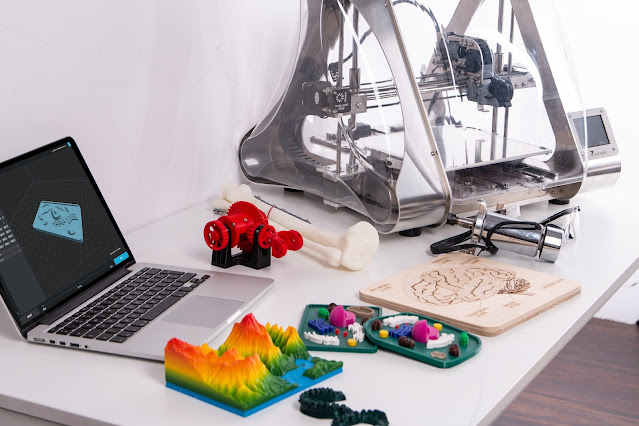The introduction of 3D printers
The introduction of 3D printers into the education industry has been an exciting development, offering students unprecedented opportunities to learn and explore the world of 3D printing. 3D printers are revolutionary tools that allow users to create physical, three-dimensional objects from digital designs. In the education industry, 3D printers offer a range of advantages, from enhancing the learning process to increasing the level of engagement in the classroom.
3D printers are capable of producing complex and intricate objects with greater accuracy than traditional methods. This allows students to gain an in-depth understanding of 3D printing, as well as its potential applications, while also promoting creativity and problem-solving skills. 3D printers can also be used to demonstrate the principles of science, engineering, and mathematics in an engaging, tactile manner.
The introduction of 3D printers into the education industry is also beneficial from an economic standpoint. 3D printers provide a cost-effective solution for producing educational materials, allowing schools to save significant amounts of money on supplies and equipment. Additionally, the use of 3D printing to create custom parts for educational projects can drastically reduce the cost of prototyping and manufacture.
The educational potential of 3D printers is only just beginning to be realized, with new applications being discovered every day. As 3D printing technology continues to evolve, it is becoming ever more accessible, allowing students to gain hands-on experience and develop the skills they need to succeed in the modern world. 3D printers are a powerful tool with the potential to transform the education industry and the learning experience of students.
The education industry is rapidly evolving thanks to the rise of technology. One of the most exciting changes that has been enabled by this advancement is the introduction of 3D printers. 3D printing has become a major tool for teaching and learning in educational settings, from primary school to universities.
3D printers are capable of creating physical objects from digital designs. This means that educators can easily create objects for use in lessons, such as 3D models of organs for biology classes or prototypes for engineering classes. In addition, 3D printing can also be used to create educational tools such as teaching aids, puzzles, and games. This provides an engaging and interactive way for students to learn, as they can actually see and touch the objects being discussed.
The advantages of 3D printing in the education industry are many. Firstly, 3D printing can provide a cost-effective way of producing educational materials and tools. This is especially useful for schools and universities that have limited budgets. Secondly, 3D printing can also be used to create custom objects that are tailored to the individual student's needs, making the learning process more effective. Thirdly, 3D printing can also provide students with an opportunity to develop their design and engineering skills, which can be beneficial for their future career prospects.
In addition, 3D printing can also help to improve the safety and accessibility of educational materials. For example, 3D printing can be used to create objects which are more ergonomic and easier to handle, reducing the risk of injury. Furthermore, 3D printing can also be used to produce customized materials which are tailored to the needs of a particular student, such as objects with braille lettering or tactile shapes. This can make learning more accessible to individuals with disabilities.
Finally, 3D printing can also be used to create scale models of objects that would otherwise be too large or expensive to create. This can be particularly useful in STEM (Science, Technology, Engineering and Maths) related subjects, as it allows students to gain hands-on experience with objects which they may not be able to access otherwise.
Overall, 3D printing is an extremely useful tool for the education industry. It can provide an engaging and cost-effective way to produce educational materials and tools, as well as helping to improve the safety and accessibility of educational resources. As the technology continues to advance, 3D printing is only likely to become even more important in the educational sector. So, why not get ahead of the curve and start experimenting with 3D printing in your classroom today?
References
1. “3D Printing in Education: A Comprehensive Overview” by J. O. Bremm, M. Lorenz, M. Müller, J. W. Köhler, and H. B. Höffle, published in the journal Frontiers in Education, 2019.
2. “A Systematic Review of 3D Printing in Education” by C. Hammer, S. Maier, and K. M. S. Kaczmarczyk, published in the journal International Journal of Emerging Technologies in Learning, 2018.
3. “3D Printing in Education: A Review of Promises and Challenges” by T. K. Alshammari and A. Y. Alshammari, published in the journal Computers in Human Behavior, 2019.
4. “3D Printing in Education: A Review” by A. V. Ranganathan and S. K. Pathak, published in the journal ARPN Journal of Engineering and Applied Sciences, 2017.
5. “Impact of 3D Printing in Education and Research” by E. Smith and L. M. Ellison, published in the journal Science and Engineering Ethics, 2016


0 Comments